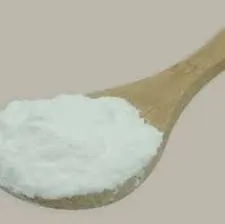The Role of Chemicals in Sewage Treatment Plants
Sewage treatment plants (STPs) play a crucial role in protecting public health and the environment by treating wastewater before it is released back into natural water bodies or reused for irrigation and industrial applications. One significant aspect of the sewage treatment process is the use of chemicals. Each chemical exhibits unique properties and functions that contribute to the effectiveness of wastewater treatment. This article will delve into the types of chemicals commonly used in STPs, their functions, and the implications of their use on the treatment process.
Types of Chemicals Used in Sewage Treatment
1. Coagulants These chemicals, such as aluminum sulfate (alum) or ferric chloride, are added to wastewater to promote the aggregation of suspended particles. Coagulation is a critical first step in the treatment process, as it facilitates the removal of solids, colloids, and other impurities from the water. When coagulants are added, they neutralize the negative charges on particles, allowing them to clump together and form larger aggregates, known as flocs, which can then be easily separated from water during sedimentation.
2. Flocculants Following coagulation, flocculants are used to enhance the agglomeration of the flocs. These polymers, such as polyacrylamide, help in the binding of smaller particles, thereby improving the efficiency of solid-liquid separation processes. The use of flocculants can significantly reduce the time required for sedimentation, leading to a more efficient treatment process.
3. Disinfectants After the removal of solids, the treated water must be disinfected to eliminate harmful pathogens. Common disinfectants used in STPs include chlorine, ozone, and ultraviolet (UV) radiation. Each disinfectant has its pros and cons; for instance, while chlorine is effective in killing a broad spectrum of microorganisms, its use can result in problematic by-products such as trihalomethanes, which are environmental contaminants. Consequently, the choice of disinfectant must be carefully considered based on the specific conditions of the treatment plant.
4. pH Adjusters Maintaining the appropriate pH level in the treatment process is vital for optimal microbial activity and chemical reactions. Lime (calcium hydroxide) or sulfuric acid may be used to adjust the pH of the wastewater to ensure the proper functioning of the biological treatment phases. For example, anaerobic digestion, which relies on certain bacteria to break down organic matter, operates best within specific pH ranges.
chemical used in sewage treatment plant

5. Nutrient Additives In many cases, the biological treatment systems, particularly activated sludge processes, require the addition of nutrients such as nitrogen and phosphorus to support the growth of microorganisms. Ammonium sulfate is often used as a nitrogen source, while phosphoric acid serves as a phosphorus source. These nutrients are essential to maintain a healthy microbial community that effectively breaks down organic pollutants.
Implications of Chemical Use
While the application of chemicals in sewage treatment is indispensable for ensuring the removal of contaminants and pathogens, it is important to consider the environmental implications of their use. Chemicals can sometimes create adverse effects, such as the formation of toxic by-products, increased sludge generation, or chemical residues in treated effluent. Therefore, it is crucial for STPs to implement effective monitoring and control measures to minimize negative impacts.
Moreover, the treatment process must be designed to handle varying concentrations of pollutants and chemicals effectively. Continuous research and advancements in technology are essential for enhancing the efficiency of chemicals used in sewage treatment. Innovations, such as the development of more environmentally friendly coagulants and disinfectants, are gaining attention in the industry.
Conclusion
In summary, chemicals play a vital role in the sewage treatment process, facilitating the effective removal of solids, pathogens, and nutrients from wastewater. Coagulants, flocculants, disinfectants, pH adjusters, and nutrient additives are integral components of STPs, each contributing to the overall efficiency of wastewater treatment. However, the use of these chemicals must be judicious, taking into account their potential environmental impacts. Continued research and innovation are necessary to ensure that sewage treatment plants can operate effectively while minimizing their footprint on the environment, ultimately leading to cleaner water bodies and a healthier ecosystem.

